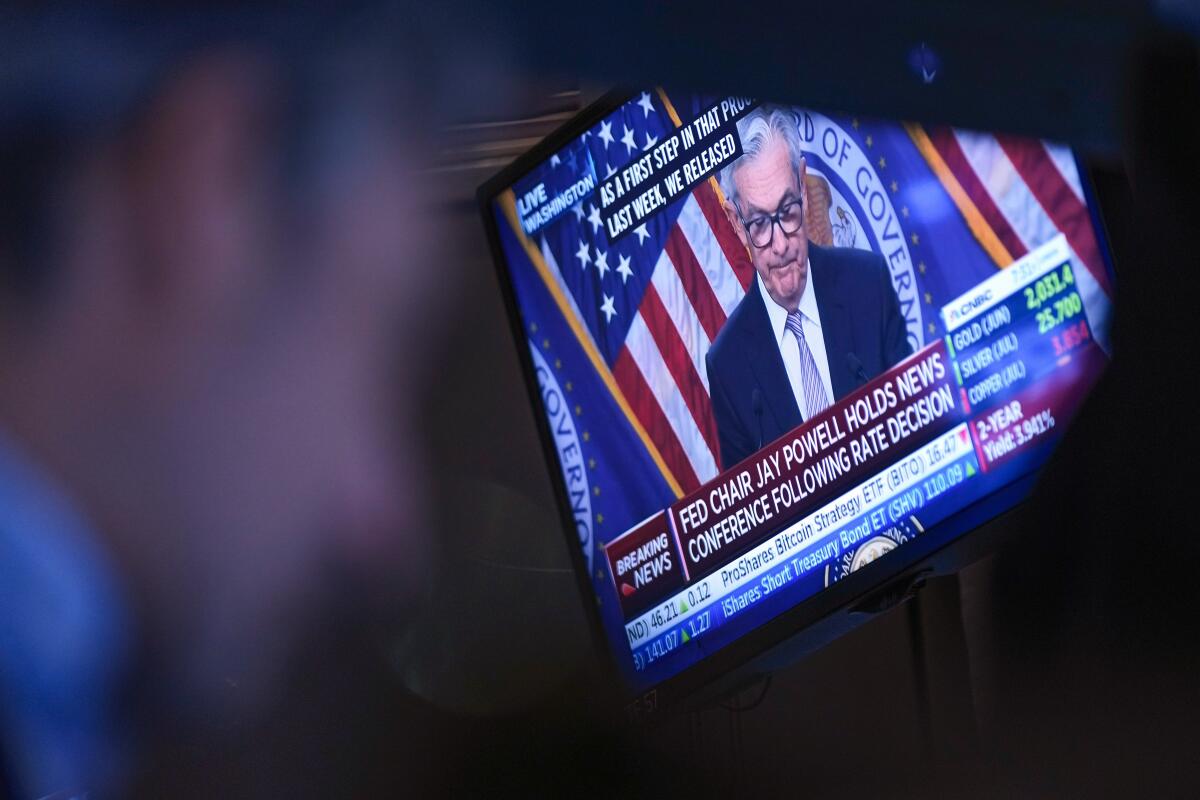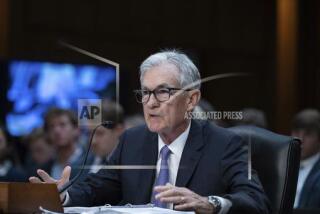Fed keeps rates unchanged for first time in 15 months but signals 2 more potential hikes this year

WASHINGTON — The Federal Reserve kept its key interest rate unchanged Wednesday after having raised it 10 straight times to combat high inflation. But in a surprise move, the Fed signaled that it may raise rates twice more this year, beginning as soon as next month.
The Fed’s move to leave its benchmark rate at about 5.1%, its highest level in 16 years, suggests that it believes the much higher borrowing rates it’s engineered have made some progress in taming inflation. But top Fed officials want to take time to more fully assess how their rate hikes have affected inflation and the economy.
The central bank’s 18 policymakers envision raising its key rate by an additional half-point this year, to about 5.6%, according to economic forecasts they issued Wednesday.
The economic projections revealed a more hawkish Fed than many analysts had expected. Twelve of the 18 policymakers forecast at least two more quarter-point increases in the Fed’s rate. Four supported a quarter-point increase. Only two officials envisioned keeping rates unchanged. The policymakers also predicted that their benchmark rate will stay higher for longer than they did three months ago.
“We understand the hardship that high inflation is causing, and we remain strongly committed to bring inflation back down to our 2% goal,” Fed Chair Jerome H. Powell said at a news conference. “The process of getting inflation down is going to be a gradual one — it’s going to take some time.”
Inflation’s relentless surge didn’t merely persist in June. It accelerated. Here’s why.
Still, Powell stopped short of saying the Fed’s policymakers have committed to resuming their rate increases when they next meet in late July. And some Fed watchers don’t envision any further rate increases at all.
“With inflation set to moderate noticeably, we are skeptical that the Fed will resume hiking interest rates,” Ryan Sweet, chief U.S. economist of Oxford Economics, wrote in a note. “Our baseline forecast is for the Fed to remain on hold through the remainder of this year before gradually easing in early 2024.”
One reason why Fed officials may be predicting additional rate increases is that they foresee a modestly healthier economy and more persistent inflation that might require higher rates to cool. Their updated forecasts show them predicting economic growth of 1% for 2023, an upgrade from a meager 0.4% forecast in March. And they expect “core” inflation, which excludes volatile food and energy prices, of 3.9% by year’s end, higher than they expected three months ago.
At his news conference, Powell made clear that the Fed still regards the still-robust job market and the wage growth that has accompanied it as contributing to high inflation. At the same time, he expressed optimism that lower apartment rental costs, among other items, may help slow inflation in the coming months. He emphasized that the Fed wants to see an inflation slowdown materialize before holding off on further rate hikes.
“We want to see inflation coming down decisively,” he said.
Consumers are switching grocery stores, brands and ingredients as they try to cope with the cost of food.
Immediately after the Fed’s announcement, which followed its latest policy meeting, stocks sank and Treasury yields surged. The yield on the two-year Treasury note, which tends to track market expectations for future Fed actions, jumped from 4.62% to 4.77%.
The Fed’s aggressive streak of rate increases — which have made mortgages, auto loans, credit cards and business borrowing costlier — have been intended to slow spending and defeat the worst bout of inflation in four decades. Mortgage rates have surged, and average credit card rates have surpassed 20% to a record high.
The central bank’s rate hikes have coincided with a steady drop in consumer inflation, from a peak of 9.1% last June to 4% as of May. But excluding volatile food and energy costs, so-called core inflation remains chronically high. Core inflation was 5.3% in May compared with 12 months earlier, well above the Fed’s 2% target.
Powell and other top policymakers have also indicated that they want to assess how much a pullback in bank lending might be weakening the economy. Banks have been slowing their lending — and demand for loans has fallen — as interest rates have risen. Some analysts have expressed concern that the collapse of three large banks this year could cause nervous lenders to sharply tighten their loan qualifications.
The Fed has raised its benchmark rate by a substantial 5 percentage points since March 2022 — the fastest pace of increases in 40 years. Skipping a rate increase now might have been the most effective way for Powell to unite a fractious policymaking committee.
Inflation has a way of affecting nearly every aspect of your finances, including the size of your tax refund and your retirement contributions.
The 18 members of the committee have appeared divided between those who favor one or two more rate hikes and those who would like to leave the Fed’s key rate where it is for at least a few months and see whether inflation further moderates. This group is concerned that raising rates too aggressively would heighten the risk of a deep recession.
In an encouraging sign, inflation data that the government issued this week showed that most of the rise in core prices reflected high rents and used car prices. Those costs are expected to ease later this year.
Wholesale used car prices, for example, fell in May, raising the prospect that retail prices will follow suit. And rents are expected to drop in the coming months as new leases are signed with milder price increases. Those lower prices, though, will take time to feed into the government’s measure.
The economy has so far fared better than the central bank and most economists had expected at the beginning of the year. Companies are still hiring at a robust pace, which has helped encourage many people to keep spending, particularly on travel, dining out and entertainment.
More to Read
Inside the business of entertainment
The Wide Shot brings you news, analysis and insights on everything from streaming wars to production — and what it all means for the future.
You may occasionally receive promotional content from the Los Angeles Times.













